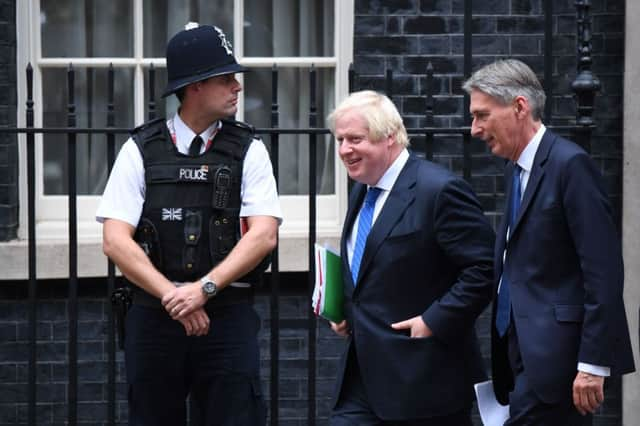Tories split over Brexit as EU warns of '˜major uncertainty'


Reports last night suggested she would use her make-or-break speech in Florence to unveil a Brexit plan that would make the payments conditional on some form of access to the single market and the customs union, which would allow the UK to strike its own trade deals during the transition period.
Her speech will also present an optimistic Brexit vision as she tries to move on from the Cabinet splits and challenges that have marked the Brexit process.
Advertisement
Hide AdAdvertisement
Hide AdMrs May will stress the importance of achieving a final Brexit deal that is in the interests of both sides.
“If we can do that, when this chapter of our European history is written, it will be remembered not for the differences we faced, but for the vision we showed – not for the challenges we endured but for the creativity we used to overcome them – not for a relationship that ended but a new partnership that began,” the Prime Minister will say.
Mrs May will insist that “Britain’s future is bright”, despite the challenges faced as a result of Brexit.
The speech comes at a particularly difficult time for Mrs May, who has had to deal with the manoeuvring of Boris Johnson as well as European opposition to her intention of moving the Brexit negotiations on to a new phase next month.
Mrs May will say: “While the UK’s departure from the EU is inevitably a difficult process, it is in all of our interests for our negotiations to succeed. So I believe we share a profound sense of responsibility to make this change work smoothly and sensibly, not just for people today but for the next generation who will inherit the world we leave them.
“The eyes of the world are on us but if we can be imaginative and creative about the way we establish this new relationship, I believe we can be optimistic about the future we can build for the United Kingdom and for the European Union.”
Since EU withdrawal was triggered, little progress has been made on the key issues, including the status of the Ireland-Northern Ireland border and the amount Britain must pay to settle its financial commitments to the bloc.
EU officials say talks cannot move on until these issues been agreed.
Advertisement
Hide AdAdvertisement
Hide AdMeanwhile, Mrs May’s Cabinet is split between those like Mr Johnson, who wants a sharp break with the EU, and those such as Chancellor Philip Hammond, who wants a long transition period.
The Prime Minister’s speech, which will build on the Brexit plans she set out in Lancaster House in January, will set out her vision for a “bold” economic and security partnership with a “time-limited” implementation period to avoid a cliff-edge change for businesses adjusting to the new arrangements. But she is thought to have rejected a Swiss-style “European Economic Area minus” deal, which could have involved ongoing payments to Brussels and potentially accepting the free movement of people.
Mr Johnson, the Foreign Secretary, whose intervention on Brexit last week led to speculation he might be about to resign, was opposed to any continued payments for single market access after the transitional period expires.
After a marathon two-and-half hour session of the Cabinet yesterday, Mr Johnson and Mr Hammond – who have been at loggerheads all summer over Brexit – left No 10 together in an apparent show of unity.
On the eve of Mrs May’s speech, the EU’s chief Brexit negotiator, Michel Barnier, issued a fresh warning that Britain must “settle the accounts” if it wants a free trade deal when it leaves the bloc. Mr Barnier said there was still “major uncertainty” over the UK’s approach on key issues and a “question of trust” about the financial settlement.
Speaking in the Italian parliament, Mr Barnier said he would be listening “attentively and constructively” to what she had to say.
Mrs May’s speech comes as a BMG Research poll for the Independent indicated a reverse in support for Brexit. In a mirror image of the June 2016 referendum result, 52 per cent supported remaining in the EU with 48 per cent in favour of leaving.